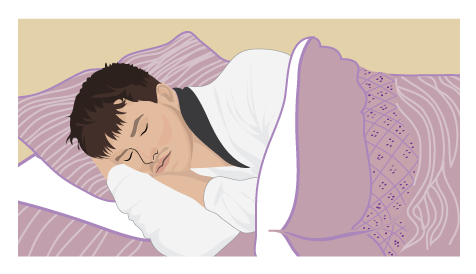Scenario One
History

KB is a 26-year-old male who was involved in a car crash two years ago. The crash caused his spinal cord to be severed at the level of C3.
<p>Following the crash, KB spent three weeks in the acute care hospital. After his condition stabilized, he was transferred to a rehabilitation facility for three months. He currently resides in a long-term care facility that specializes in quadriplegic care. He has a #8 cuffed tracheostomy tube with an inner cannula. Throughout the day, the cuff is kept mostly deflated so he can vocalize. He is on a portable ventilator with the following settings: </p> Mode: volume control - assist/control<br/> Rate: 14 breaths per minute<br/> Tidal volume: 650 mL<br/> FiO2: .21<br/> <br/> <p>He has been maintained on these settings for the past several months without incident. </p> <p>Over the past 24 hours, KB’s condition seems to have changed. In particular, he is complaining of dyspnea. His pulse has increased to 102 and his temperature is 101.3F. His SpO2 on room air is 88%. His caregiver reports that she has been suctioning him for moderate amounts of thick, dark yellow sputum.</p>
Authors and Reviewers
-
Heart sounds by Dr. Jonathan Keroes, MD and David Lieberman, Developer, Virtual Cardiac Patient.
- Reviewed by Dr. Barbara Erickson, PhD, RN, CCRN.
-
Last Update: 11/9/2021
Sources
-
Heart Sounds and Murmurs Across the Lifespan (with CD)
Dr Barbara Ann Erickson
Publisher: Mosby
ISBN-10: 0323020453; ISBN-13: 978-0323020459 -
Heart Sounds and Murmurs: A Practical Guide with Audio CD-ROM 3rd Edition
Elsevier-Health Sciences Division
Barbara A. Erickson, PhD, RN, CCRN - How to measure blood pressure using a manual monitor
Mayo Foundation for Medical Education and Research (MFMER) -
Heart and Lung Sounds Reference Guide
PracticalClinicalSkills.com -
Manual Blood Pressure Measurement
Vital Sign Measurement Across the Lifespan
?
main Pv# 1 , InitialPages , pix False , #Drops 0 ;
trys 0